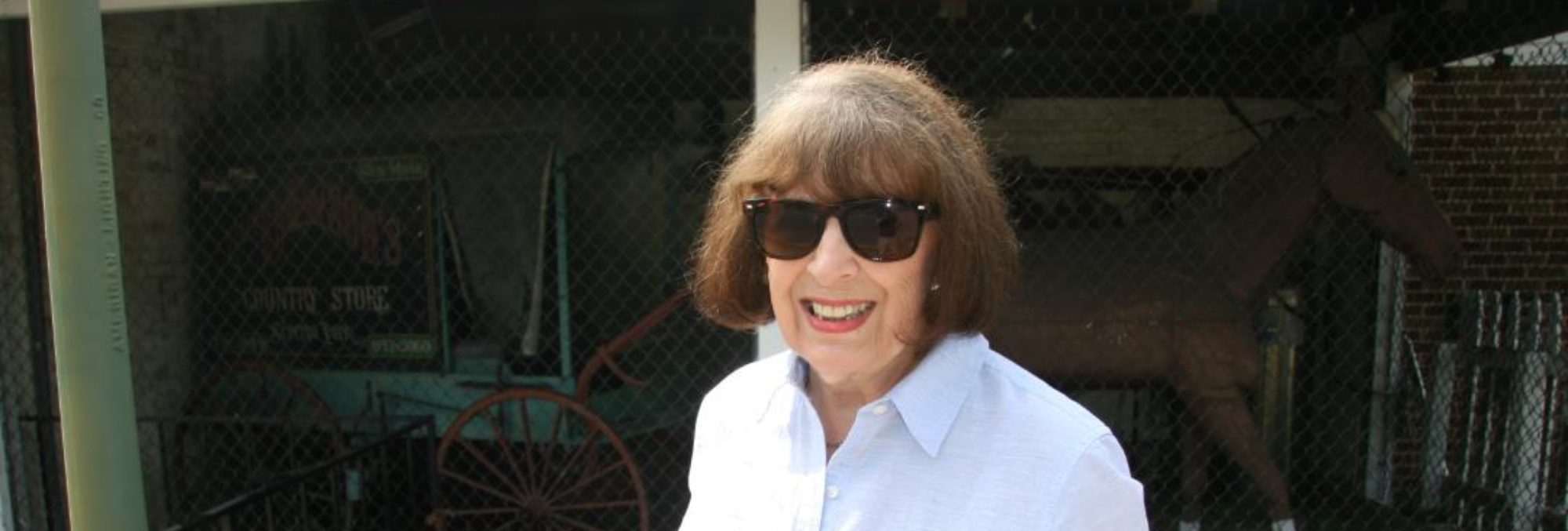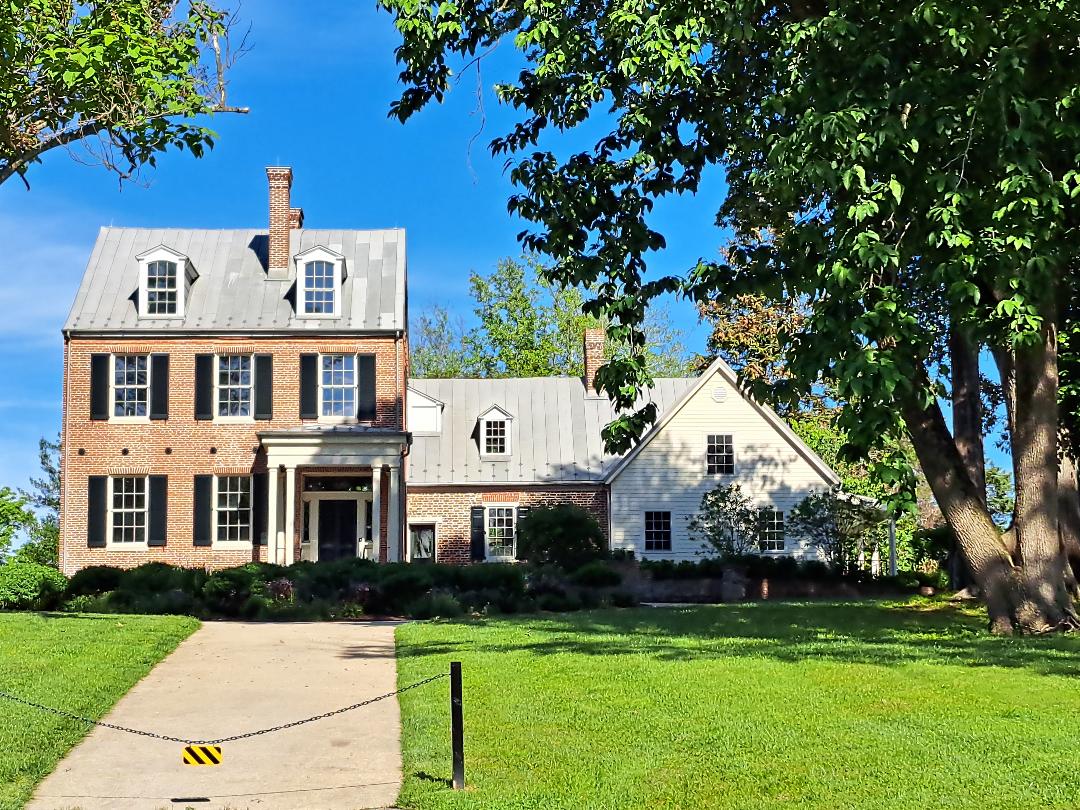AROUND THE PARK AGAIN by Sharon Lee Tegler

Brought to you by Jing Ying Institute of Kung Fu & Tai Chi,

Lean On Dee Senior Home Care Services, and

Midas of Annapolis and Pasadena
The Smithsonian Institution has long been referred to as America’s attic because of the organization’s vast collections. But, little did I realize that we could visit a nearby extension of that attic until visiting Homestead Gardens recent Green Expo. There, we discovered an interesting exhibit from the Smithsonian Environmental Research Center manned by volunteers Jim Oland and Nora Terres. The pair informed us that the center is located on two adjoining campuses in Edgewater at 647 Contees Wharf Road. What truly fascinated us, however, is that the complex is situated around a historic home built in 1735 by tobacco planter William Sellman.
Celebrating its 60th Anniversary this year, the Smithsonian Environmental Research Center (SERC) began as a surprise bequest. Entrepreneur Robert Lee Forrest willed his abandoned Java Dairy Farm (the ruins of which still exist) and other holdings on Maryland’s Rhode River to the Smithsonian Institution. The research center was officially established in 1965 as the Chesapeake Bay Center for Field Biology.
On Tuesday, we met with Woodlawn History Center Program Manager Christine Dunham and Principal Archaeology Investigator Jim Gibb. We learned from Jim that an initial grant from the Ford Foundation and subsequent grants enabled the Smithsonian to purchase additional acreage over the years. Today SERC encompasses 2,650 contiguous acres of land.
Gibbs heads the Environmental Archaeology Lab, one of 24 SERC research labs that run the gamut from Animal- Plant Interaction and Fish and Invertebrate Ecology to Forest Ecology, Nutrient Cycles, and Photobiology and Solar Radiation. His team, made up of volunteer archaeologists, has dedicated considerable time and effort to sifting through the soils of the grounds surrounding the original Sellman House (now Woodlawn House). They have unearthed evidence tracing human occupation back 3,000 years to the Native Americans (possibly Nanticoke) who used the property as seasonal hunting and fishing grounds.
“Our work is primarily involved with land usage, so we haven’t delved that much into Native American habitation,” Gibbs said. “We’re more focused on European settlers’ arrival on the land in the 1660’s. The land here mainly consisted of two tobacco plantations.”
The team has conducted digs at several sites surrounding the Sellman house including one settled by English emigrants Thomas Sparrow and his family in 1649. They’ve also unearthed a nearby site settled by the Shaw family. They named the property Shaw’s Folly and resided there until the mid 1700’s when taken over by the Sellman family. Among other things, Gibbs and the team have collected animal bones, pottery shards and other items that show how the land was being used.
The Sellman/Woodlawn house is overseen Christine Dunham. She also created the Woodlawn History Trail which starts opposite the home and runs through a great deal of the property.
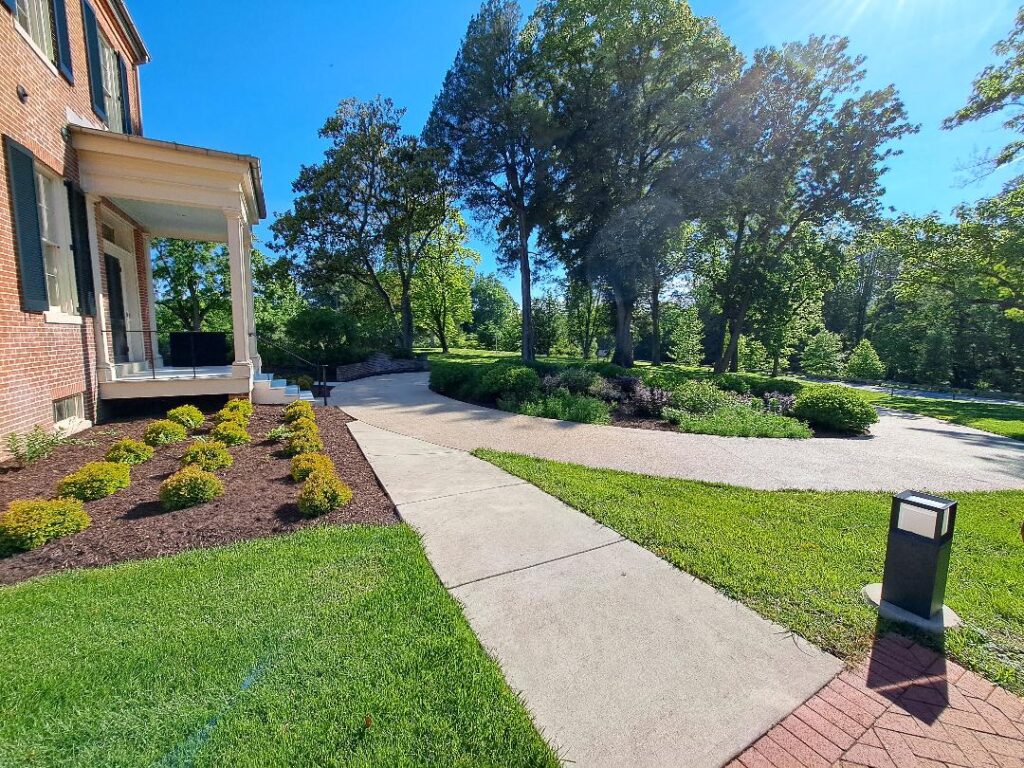
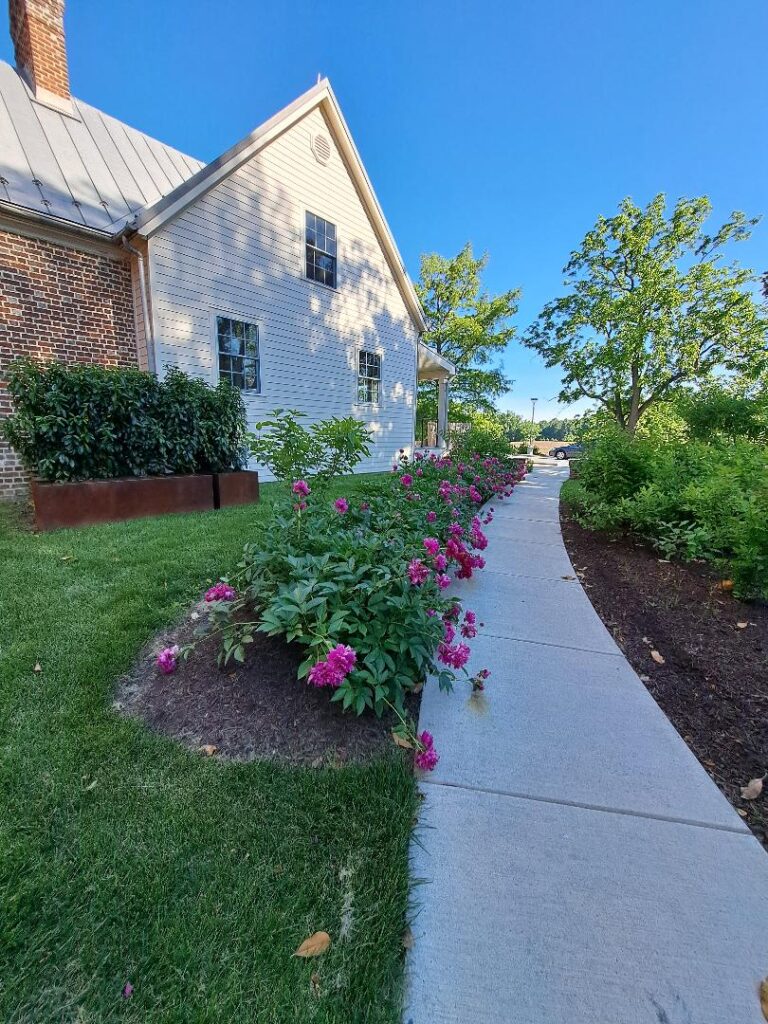
The History Trail is beautiful and takes visitors across a startling amount of spectacular land, and up hills past the Java mansion ruins that must have been breathtaking at one time. The ruins are the site of extensive work by Gibbs’ Archaeology Lab team.

Dunham’s historical focus includes assembling and managing an impressive number of volunteers who serve as docents leading tours across both the Woodlawn and Waterfront portions of the SERC campus.
Dunham and Gibbs have worked well together assembling displays of the artifacts the archeology team has collected, providing ecological clues to how the Research Center’s lands were originally used and how they have changed through the centuries.
“The land here has always been under cultivation and continues to be. However, SERC currently leases the land to local farmers,” Gibbs said.
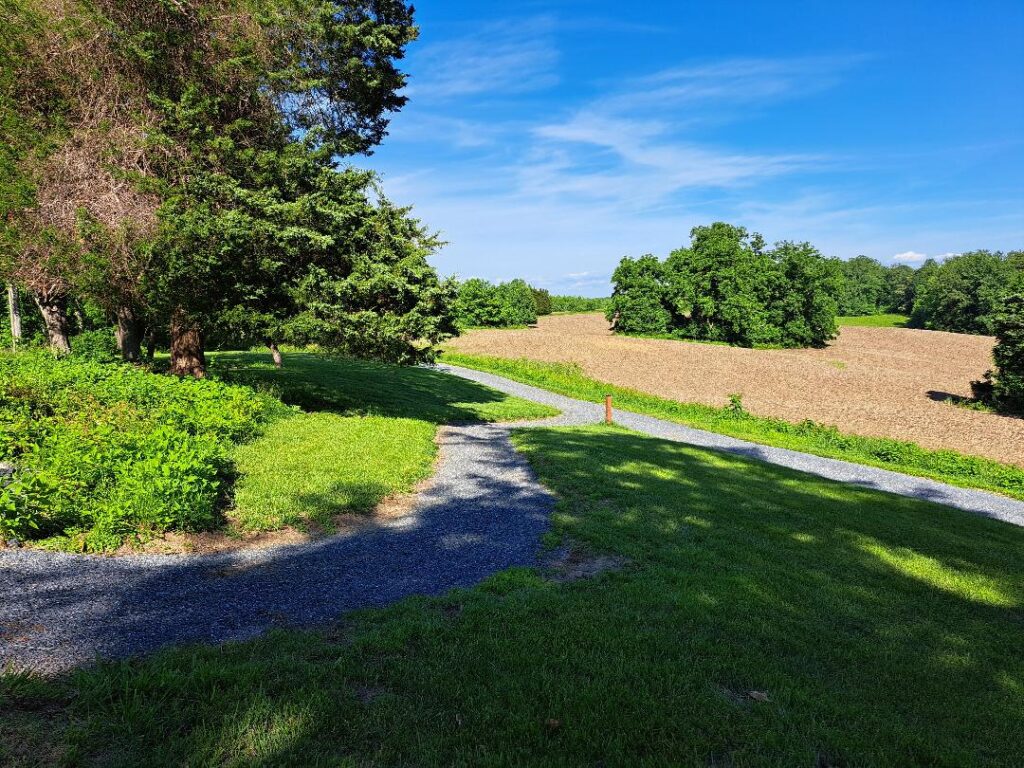
“The center hasn’t yet done any agricultural research but that’s a possibility for the future. Instead, my team has explored layer after layer of formerly farmed land and documented how there has been tremendous soil erosion and depletion of nutrients for centuries, almost from the very beginnings of cultivation here. We’ve proven that the majority of eroded soils have ended up in our tributaries, blocking their waters from flowing freely.”
The team has also been able to document what crops were raised where. For example, after switching from primarily growing tobacco, the Sellman farm preferred beef and raised cattle and the grain to feed them while the Java farm, originally owned by the Contee family, preferred pork and raised hogs.
A tour through Woodlawn House led by Dunham, would show just what the archaeology team’s knowledge was based on.
Dunham began the tour in the reception area. She first showed us a model of the Sellman/Woodlawn House. A chart above the model details changes to the home from the time it was constructed for planter William Sellman and family in 1735 and modified through two centuries of ownership by the Sellman family until the early 1900’s when a new family, the Kirkpatrick-Howats moved in. In the 1970’s, the Kirkpatrick-Howats demolished a previous wooden addition and added a passive solar wing to reduce energy costs.
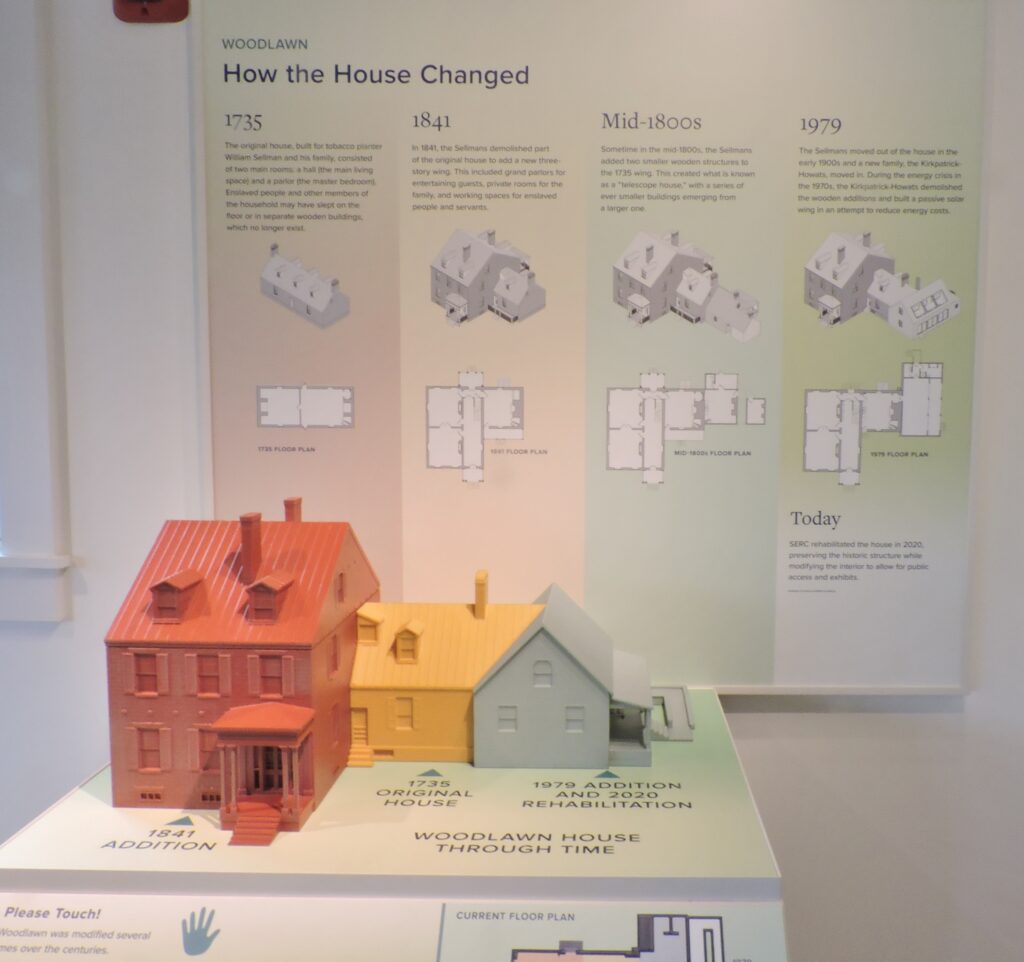
in 2020, SERC rehabilitated the house, preserving the historic structure while modifying the interior to allow for public access and exhibits. Dunham next leads us through the actual entrance to Woodlawn House, entering a room that was part of the original two-room 1735 Sellman House. As can be seen below, the room still has its original fireplace that would have been used for cooking.
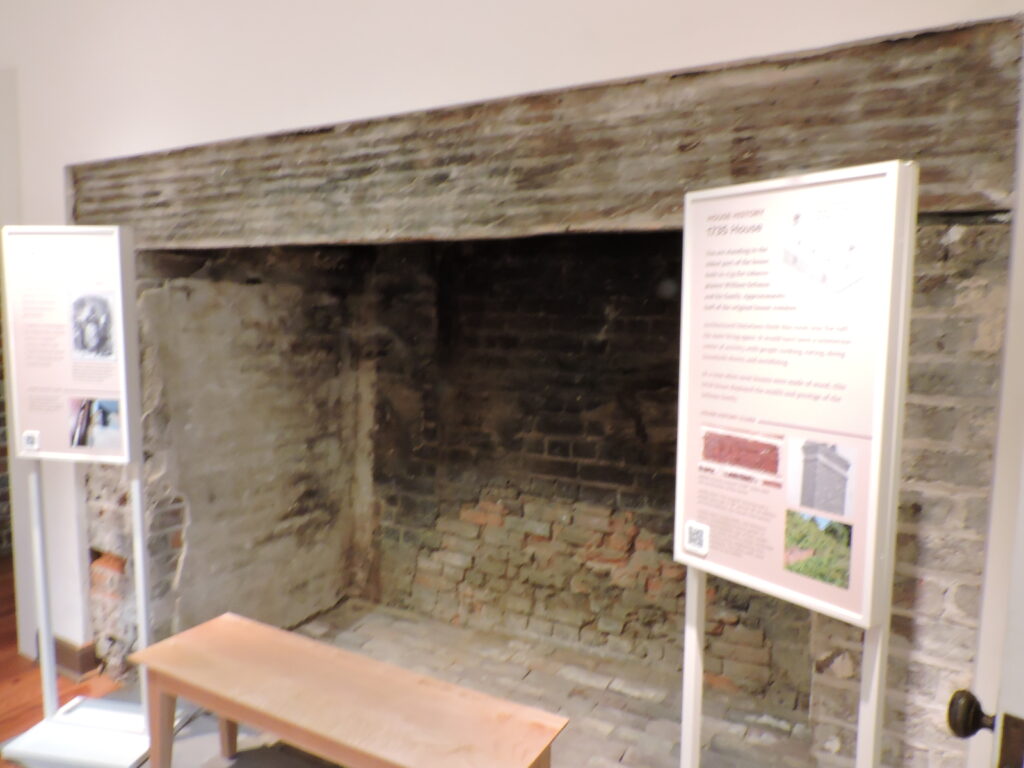
We moved on to an open exhibit space for items dating to the 1600’s and early 1700’s that were gathered from archaeological excavations at Sparrow’s Rest and Shaw’s Folly. The artifacts included metal and bone eating utensils, animal bones, hunting and fishing equipment, sewing tools, and keys among other items.
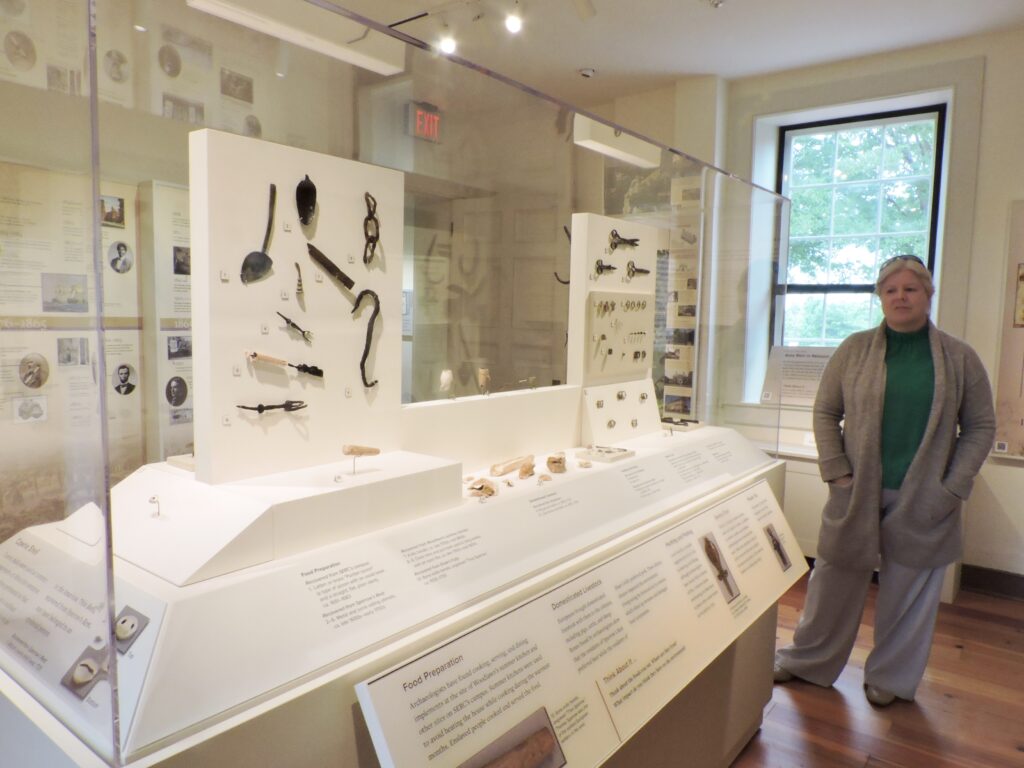
Panels depicting the history of the lands, plantations, inhabitants and events are also seen in this display room.
Additions to the Sellman House over the centuries were well done with high ceilings, fine woodwork and rooms that flow nicely into one another. Entering what would have been the front parlor, we viewed a magnificent fireplace complete with two portraits of gracious ladies from the Sellman family.
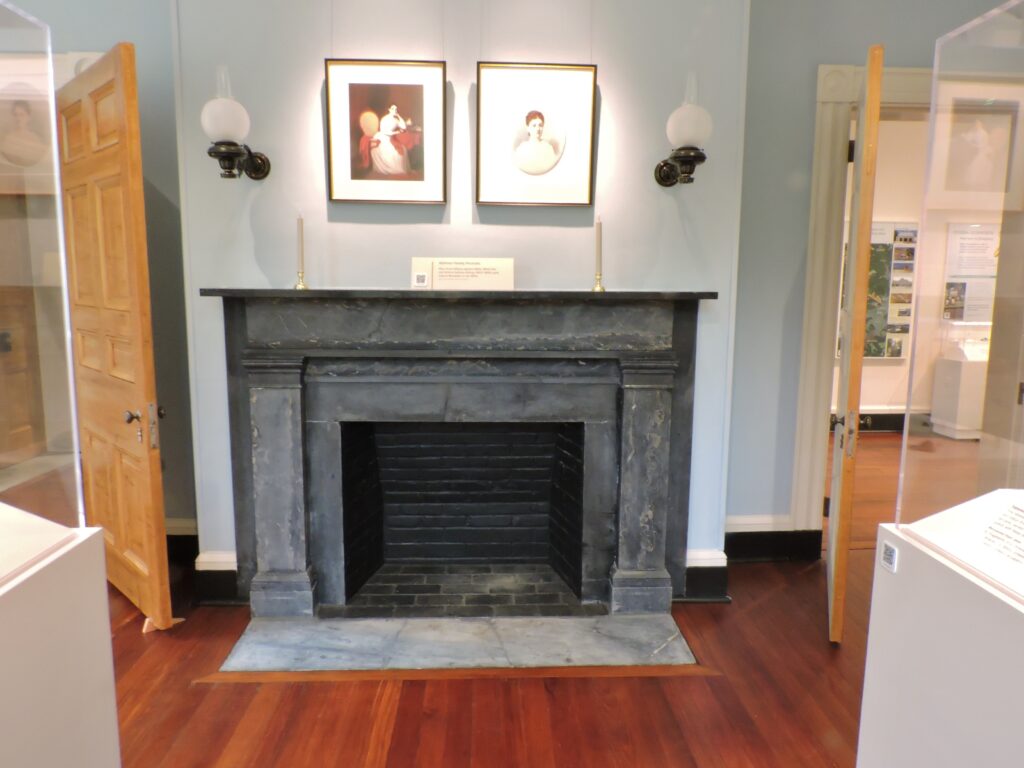
A second parlor lay just beyond and this room and represents the years the home was owned by the Kirkpatrick-Howat family. Family portraits of three of the Kirkpatrick-Howats are seen above the fireplace. Hidden on the wall to the left of the fireplace, a bell-pull still exists that was used to summon slaves or servants.
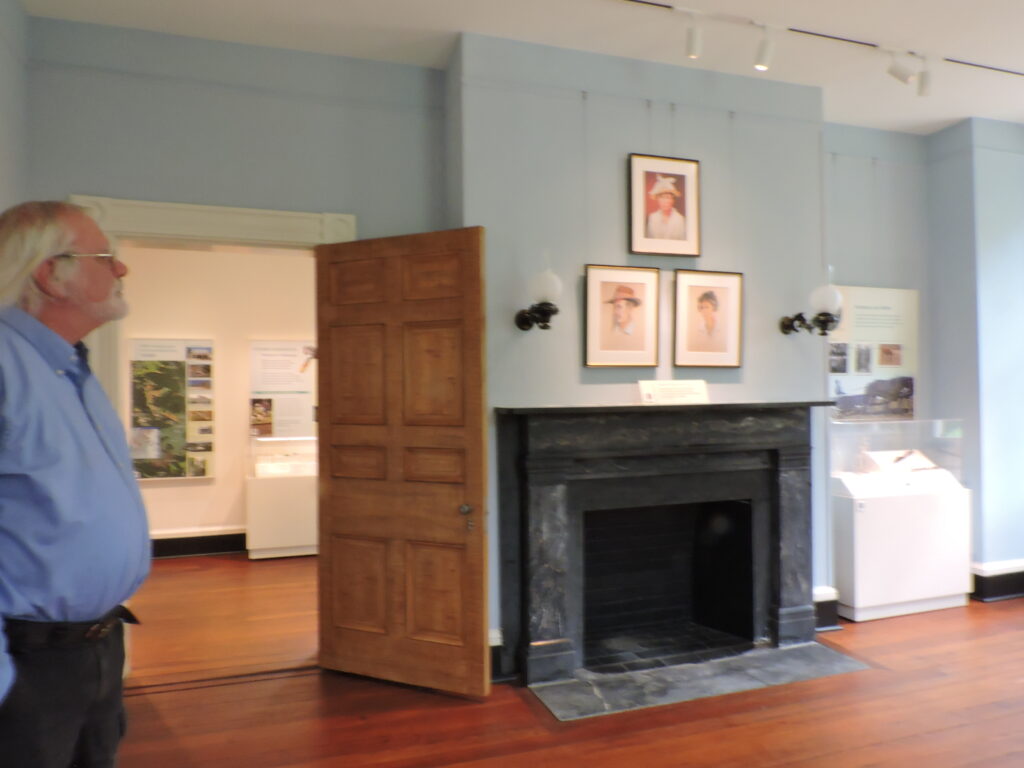
Dunham pointed out two historic panels with explanations of exactly which families lived in the Sellman/Woodlawn House and when. The first is dedicated exclusively to the Sellmans.
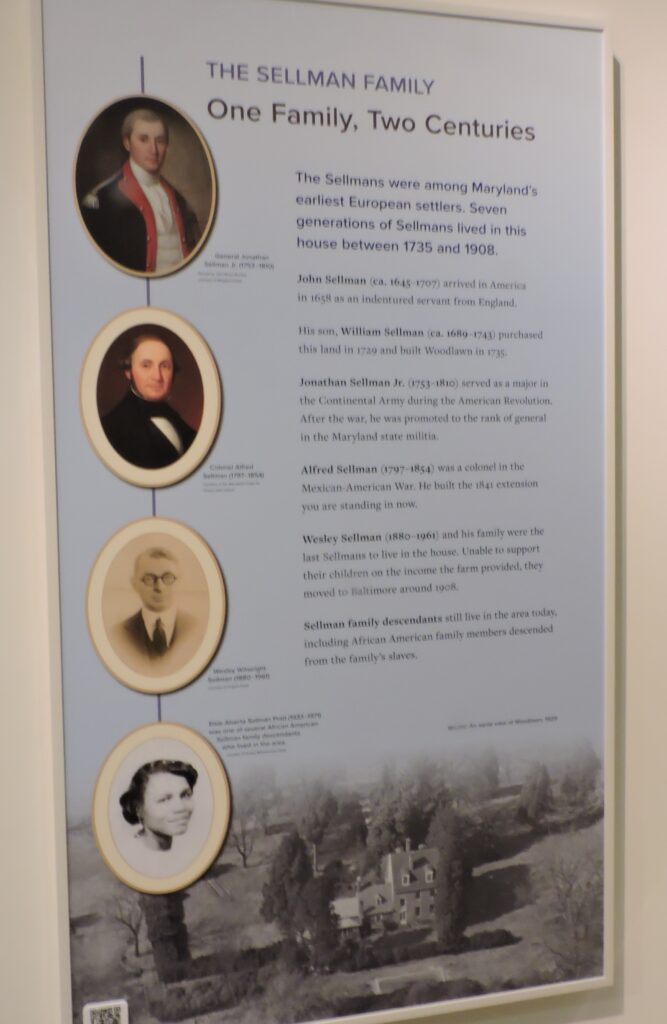
The second panel covers all of those who lived in the Woodlawn House through just short of three centuries.

A third panel grabbed our interest because it details the Sellman’s rise from being indentured servants themselves to plantation owners and slaveholders.
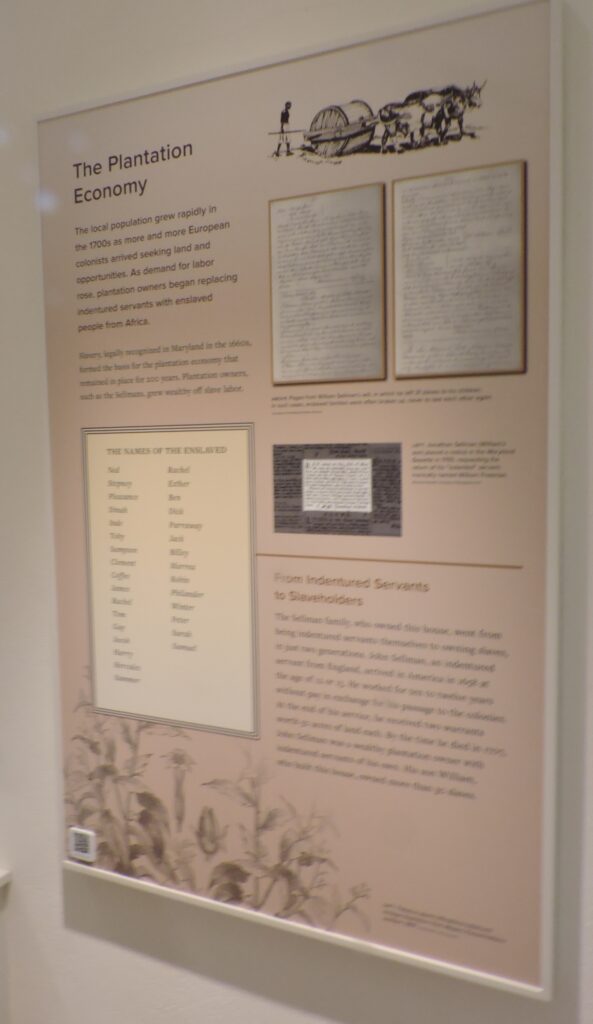
One of the most fascinating things concerning the Smithsonian Environmental Research Center grounds, from Christine Dunham’s point of view, is the Java Mansion site which began its existence as Annapolis merchant Nicholas Maccubbin’s mansion Squirrel Neck in 1747. It was purchased in 1820 by Lieutenant John Contee who’d served aboard the USS Constitution which defeated the HMS Java off the coast of Brazil in December 1812. He renamed the mansion Java in honor of the victory. The mansion was struck by lightning and burned in 1890 but was rebuilt. It was owned briefly by Elizabeth Kirkpatrick-Howat and her family before they purchased Woodlawn. In 1915, entrepreneur Robert Lee Forrest purchased and operated the property as the Java Dairy Farm through 1946. The farm was, for the time, a state-of-the-art operation promoting a clean sanitary environment and doing well.
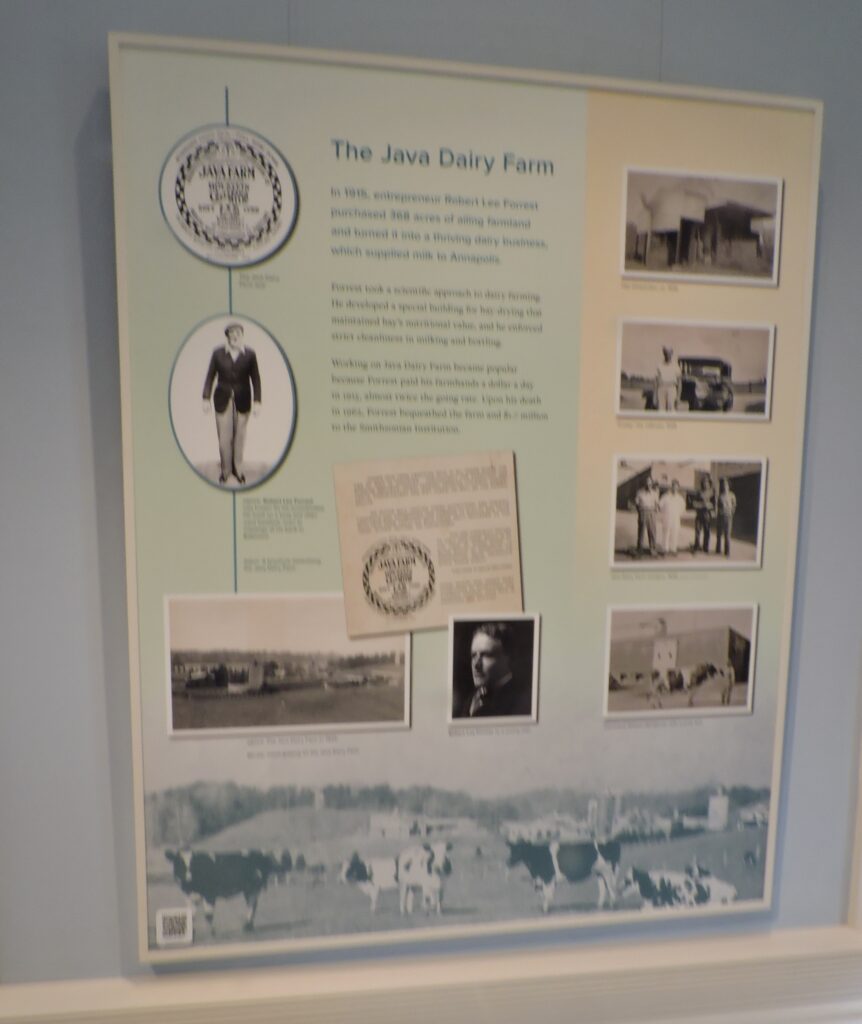
In 1962 Robert Lee Forrest passed away and bequeathed his 368 acre farm and other holdings to the Smithsonian Institution. New Secretary, S. Dillon Ripley, persuaded the Institution to consider holding onto the property. Blessed with a wide range of habitats for terrestrial, wetland, and estuarine field biology and ecology, it became the Chesapeake Bay Center for Field Biology in 1965 and served as a field collecting site for Smithsonian scientists. A series of financial grants made it possible to purchase more acres of adjoining land and an old cow barn was converted to laboratory space and a dormitory. Changing its name in 1969 to the Chesapeake Bay Center for Environmental Studies, the facility was attracting lots of positive attention, drawing more and more scientists and acquiring more connecting land. In 1985, the facility was renamed the Smithsonian Environmental Research Center.
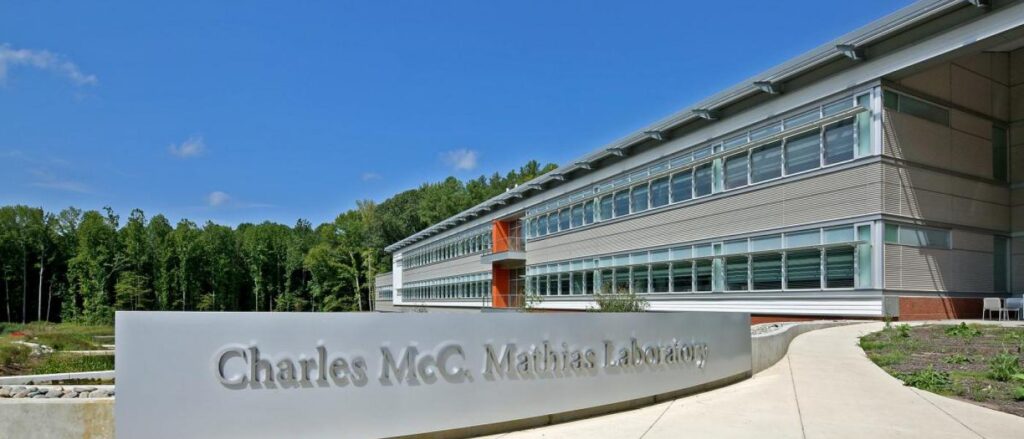
While Gibbs’ archaeology work takes place primarily at Woodlawn and nearby locations (also offsite including at a shell button making site on the Delmarva Peninsula and a copper mining site in Carroll County) the work of most of the other scientists takes place on the Waterfront Campus and the facilities there are amazing. There is the modernistic 92,000 square ft. LEED-Platinum Charles McC. Mathias building with 69,000 square ft. of office and laboratory space, on-site solar energy production and geothermal heating and cooling. There is also the Charles McC. Mathias Laboratory which has another 92,000 square ft. of laboratory and office space.
We were also able to drive by the Phillip D. Reed Education Center arranges class/ group field trips to the Rhode River site for about 5,000 school children annually and is a hub for 10,000 visitors to the Research Center’s 7 miles of hiking trails.
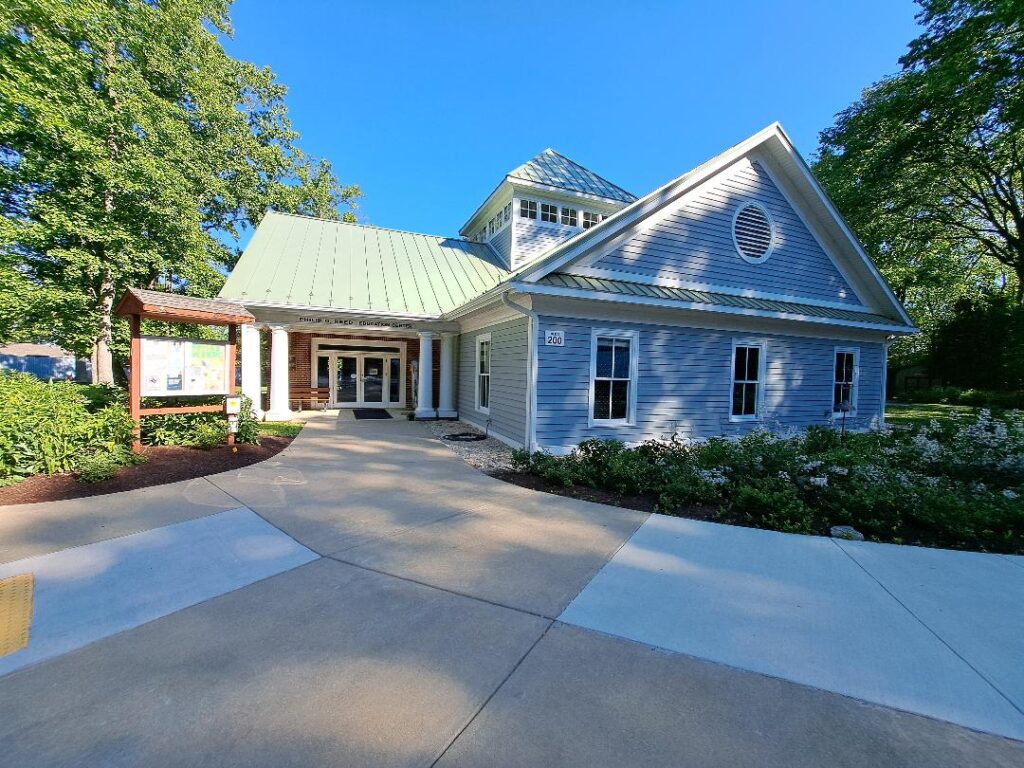
We also drove by the SERC dock located along the Rhode River with its wet lab which also serves as a canoe and kayak launching site.
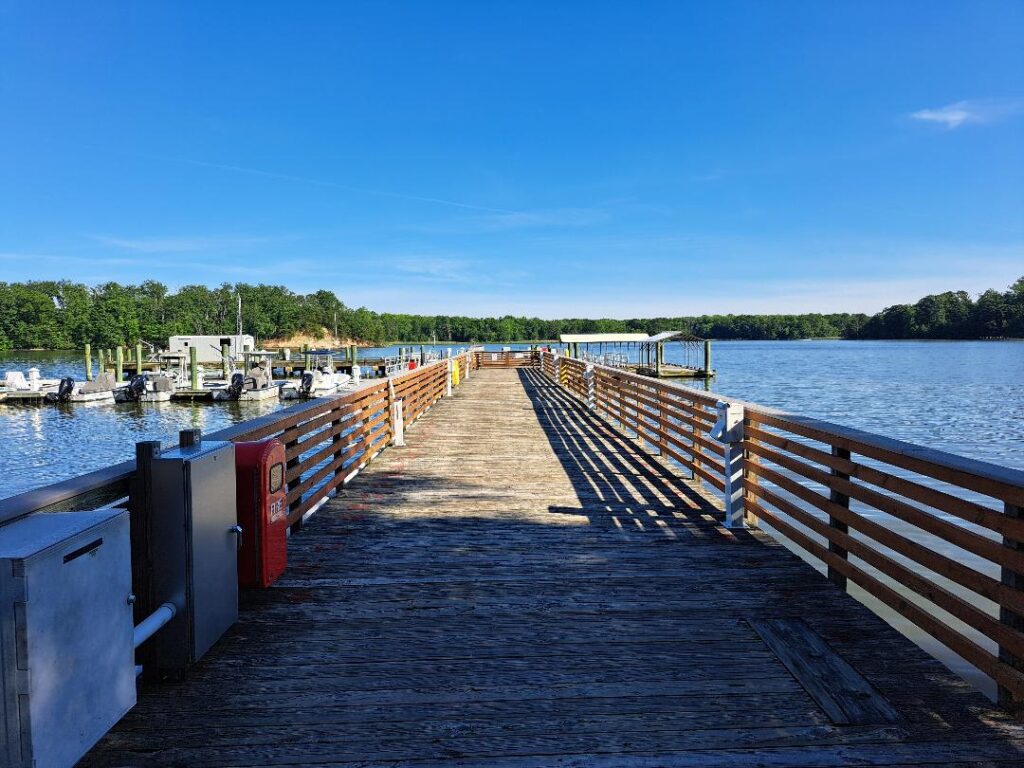
Driving around the Smithsonian Environmental Research Center before leaving we noticed groups of walkers taking advantage of the Woodlawn History Trail and lots of bicyclists along other scenic trails. There is so much to see and do.
Taking Christine Dunham’s reminder that the Woodlawn History Center has limited visiting hours on weekends seriously, we decided to check. We found that Woodlawn House is now open on the first Sunday of each month from 1 to 4 pm for “Summer Sundays”.
Woodlawn History Center is also open on select Saturdays with dates and times listed at Woodlawn History Center | Smithsonian Environmental Research Center (si.edu). You can contact Christine Dunham at dunhamc@si.edu or 443-482-2293 for private or group tours or to check Woodlawn History Center open days.
For information on the Smithsonian Environmental Research Center and its many scientific research programs, visit Smithsonian Environmental Research Center | Understanding Ecosystems for a Sustainable Future (si.edu) .
Katherine’s Light Foundation Music Festival at Severna Park Taphouse on June 14th
We hear that this year’s Katherine’s Light Foundation Music Festival & Charity Event being held at the Severna Park Taphouse on Saturday, June 14 from noon to 8 pm will be sensational. Held annually to honor the memory of Katherine Mueller, the event offers a full day of music, raffles, silent and live auctions, and much more. Headliners, The Crayfish, will be joined by the Lost and Found Trio Band, Miggs Rangel, dj Brian Austin, George Evans, Honey Sol, TMI and others. Proceeds from the event support Neuroendocrine Tumor Research, Baltimore Washington Medical Center, Katherine Light Foundation Nursing scholarships at Anne Arundel Community College, the Wellness House of Annapolis and more. Those interested in sponsoring the event may contact Larry Sells at 443-569-9598. For more information, visit Facebook.
The Around The Park Again column is brought to you this week by Jing Ying Institute of Kung Fu and Tai Chi at 1195 Baltimore Annapolis Blvd. – For over two decades providing martial arts training that improves cardio-vascular health, strength and flexibility while reducing stress. Jing Ying is again bringing Tai Chi to the Severna Park Community Center. From health-defense to self-defense, Jing Ying provides fitness with a purpose for the whole family!

and by Lean On Dee Senior Home Care Services at 815 Ritchie Hwy., Suite 206 – When you need someone to lean on, Lean On Dee. Their experienced team of personal care management specialists and friendly companions provide high quality consistent care.

And Midas of Annapolis and Pasadena, A family- owned business with four locations (Annapolis, Pasadena, Laurel and Wheaton). With 40 years’ experience and the backing of a national brand, they are committed to earning customers’ trust by offering the expertise, value and responsiveness drivers expect – “every time they visit us.”

